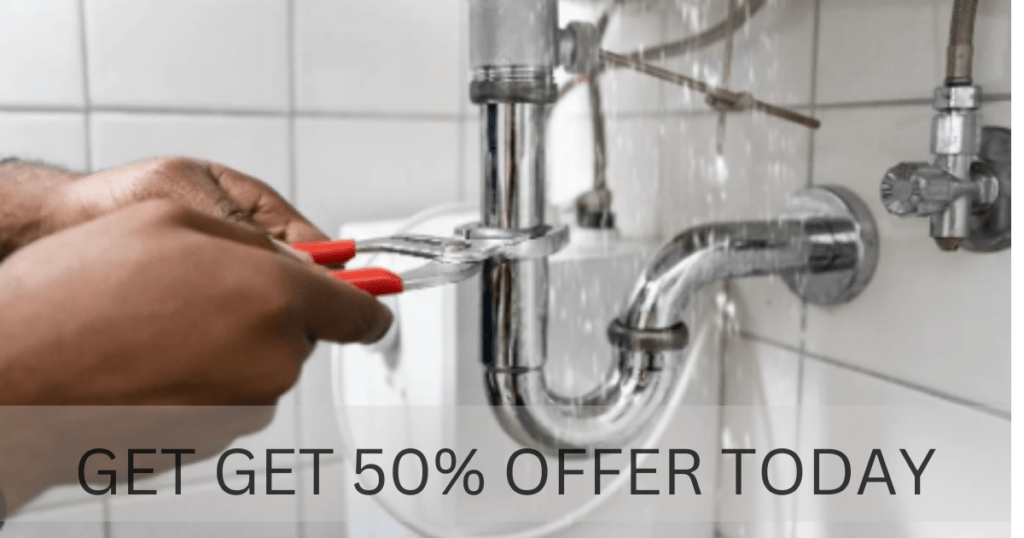Plumbing is an essential aspect of any modern infrastructure, ensuring the smooth flow of water and efficient disposal of waste. In recent years, advancements in plumbing technology have revolutionized the industry, introducing innovative solutions that enhance performance, conserve resources, and improve overall efficiency. In this blog, we will delve into the fascinating realm of advanced plumbing, exploring various sub-topics to shed light on the latest developments in the field.

Table of Contents
Smart Plumbing Systems:
Smart plumbing systems refer to the integration of modern technology and connectivity into traditional plumbing infrastructure. This enables remote monitoring, control, and optimization of various plumbing functions. These systems utilize sensors, actuators, and advanced data analytics to enhance efficiency. The end result is real-time information for maintenance and Leak Detection and Prevention:
In advanced plumbing smart plumbing systems employ sophisticated sensors to identify leaks in real-time. By promptly detecting leaks, these systems can help prevent water damage. They can conserve water resources, and reduce costly repairs. Some systems even have automatic shut-off valves to isolate the affected area in the event of a leak.
Water Conservation and Efficiency:
Smart plumbing systems provide insights into water consumption patterns. That enables users to identify areas of excess usage and implement conservation measures. They can also optimize water flow through intelligent faucets, showerheads, and toilets. That helps in reducing water wastage without compromising user experience.
Remote Control and Monitoring:
With smart plumbing systems, users can remotely control and monitor various plumbing functions. That can be done through smartphone applications or web interfaces. This includes adjusting water temperature, activating irrigation systems, and receiving real-time alerts for emergencies.
Predictive Maintenance Plumbing:
By analyzing data from sensors and plumbing fixtures, smart systems can predict maintenance needs. That can help in enabling proactive repairs and minimizing downtime.
Energy-Efficient Advanced Plumbing Fixtures:
Energy-efficient plumbing fixtures are designed to minimize water and energy consumption. They can do it without sacrificing performance or convenience. These fixtures incorporate innovative technologies. They also have design features that promote sustainability and reduce water usage.
Low-Flow Faucets and Showerheads:
Energy-efficient faucets and showerheads are engineered to deliver a satisfying water flow. That also significantly less water use than traditional fixtures. They achieve advanced plumbing through aerators, which mix air with water to maintain pressure reducing consumption.
Dual-Flush Toilets:
Dual-flush toilets offer users the option to choose between a full flush for solid waste. That can help reduce flush for liquid waste. This design helps conserve water by using only the necessary amount for each type of waste. The result is substantial water savings over time.
High-Efficiency Water Heaters:
Energy-efficient water heaters utilize advanced insulation. They have improved heat exchangers, and efficient heating mechanisms. The mechanisms minimize energy loss and optimize water heating. Tankless water heaters, for example, heat water on-demand. That eliminates the need for standby heating thus reducing energy consumption.
Greywater Recycling Systems:
These systems collect and treat wastewater from sinks, showers, and laundry. That makes them suitable for non-potable uses such as irrigation or toilet flushing. By reusing greywater, energy-efficient plumbing fixtures help reduce freshwater demand. They also alleviate the strain on water supplies.
Rainwater Harvesting Systems:
Energy-efficient plumbing can incorporate rainwater harvesting systems. These systems collect rainwater from rooftops and store it for later use. This water can be utilized for landscape irrigation and toilet flushing. Others can be use non-potable applications, reducing reliance on municipal water sources.
Advanced Pipe Materials:
Advancements in materials science have led to the development of innovative pipe materials that offer improved durability and performance. Here are a few notable sub-topics related to advanced pipe materials:
Cross-Linked Polyethylene (PEX):
PEX pipes are flexible, resistant to corrosion, and offer excellent freeze resistance. That makes them suitable for both residential and commercial plumbing applications.
Chlorinated Polyvinyl Chloride (CPVC):
CPVC pipes provide superior chemical resistance and are commonly used for hot water distribution systems. That is due to their ability to withstand higher temperatures.
High-Density Polyethylene (HDPE):
HDPE pipes are highly durable, resistant to chemicals and abrasion. They have a long lifespan too. They are often used for underground water and sewerage systems.
Composite Pipes:
Composite pipes combine different materials to leverage their individual strengths. For example, pipes with an inner layer of PEX . They also have an outer layer of aluminum that provides both flexibility and structural rigidity.
Corrosion-Resistant Pipes:
According to experts, various materials, such as stainless steel or plastic-coated copper pipes. These materials are designed to resist corrosion caused by aggressive water conditions. The end result is a long-term reliability and water quality.
Advanced Plumbing Design and Layout:
Efficient plumbing design and layout play a crucial role in optimizing water distribution. They minimize energy consumption, and ensure plumbing systems function effectively. Some key aspects of plumbing design and layout include:
Water Supply Planning:
Proper sizing and layout of water supply lines can help a lot. Considering factors such as peak demand, pressure requirements, and flow rates ensures adequate water supply.
Drainage System Design:
Effective drainage system design involves proper sizing. Also slope calculations can facilitate efficient waste removal and prevent clogs.
Ventilation and Odor Control:
Plumbing design includes the integration of ventilation systems to remove sewer gasses. This can help in reducing odors, ensuring a safe and comfortable indoor environment.
Energy Efficiency Considerations Advanced Plumbing:
Incorporating energy-efficient practices like installing low-flow fixtures, utilizing recirculation systems for hot water. That helps in optimizing pipe insulation thus reducing energy consumption and costs.
Accessibility and Safety:
Plumbing design should adhere to accessibility standards. That is done by ensuring fixtures, controls, and piping are easily reachable for individuals with disabilities. Safety measures such as backflow prevention devices should also be used. That way, the system will protect water sources from contamination.
Advanced Plumbing Codes and Regulations
Plumbing Codes and Regulations play a crucial role in ensuring safety. They also enure functionality, and reliability of plumbing systems. They are established by government bodies and industry organizations to set standards and guidelines for plumbers. The plumbers must adhere to them during the design, installation, and maintenance of plumbing systems. Here are some key sub-topics related to plumbing codes and regulations:
Health and Safety Standards:
Plumbing codes include provisions that prioritize the health and safety of individuals. That is done by addressing issues such as proper wastewater disposal, and prevention of cross-contamination between water sources. All this is done using safe materials in plumbing systems.
Pipe Sizing and Ventilation Requirements:
Codes specify the appropriate sizing of pipes to ensure adequate water flow and pressure within the system. Additionally, they outline ventilation requirements to prevent the buildup of harmful gasses and to promote efficient drainage.
Water Efficiency and Conservation:
Plumbing codes increasingly emphasize the need for water efficiency and conservation. They may mandate the use of low-flow fixtures, such as toilets and faucets. These fixtues require the installation of water-saving devices like rainwater harvesting systems or gray water recycling systems.
Backflow Prevention:
Backflow occurs when the flow of water in a plumbing system reverses. That can potentially lead to the contamination of the potable water supply. Plumbing codes include measures to prevent backflow. That is done by installing backflow prevention devices and regular testing and maintenance of these devices.
Accessibility Compliance:
Plumbing codes also address accessibility requirements for individuals with disabilities, in accordance with theDisabilities Act. This includes provisions for accessible fixtures, grab bars, and clearances to accommodate wheelchair users.
Inspections and Permits:
Plumbing codes typically require inspections at various stages of construction to ensure compliance with the regulations. Additionally, permits may be necessary before initiating plumbing work, That will ensure that it meets the required standards and is carried out by licensed professionals.
Conclusion:
The world of advanced plumbing encompasses a range of innovative solutions aimed at improving efficiency. It helps in reducing resource consumption thus enhancing user experience. From smart plumbing systems that enable remote monitoring and water conservation to energy-efficient fixtures that promote sustainability, these advancements are transforming the plumbing industry. By embracing these technologies, you can contribute to a more sustainable future while cost savings. As we continue to witness advancements in plumbing technology, it is crucial to stay informed.


